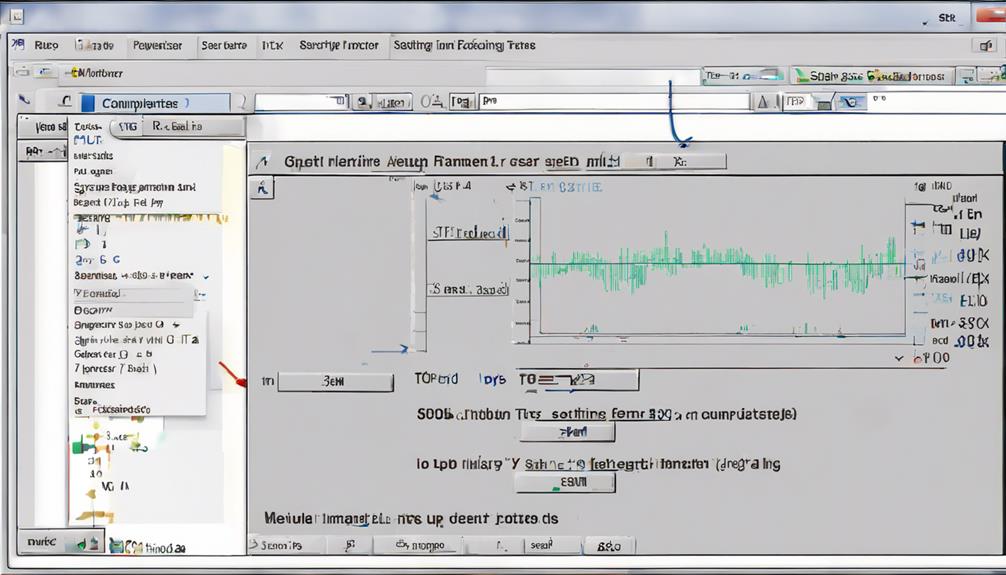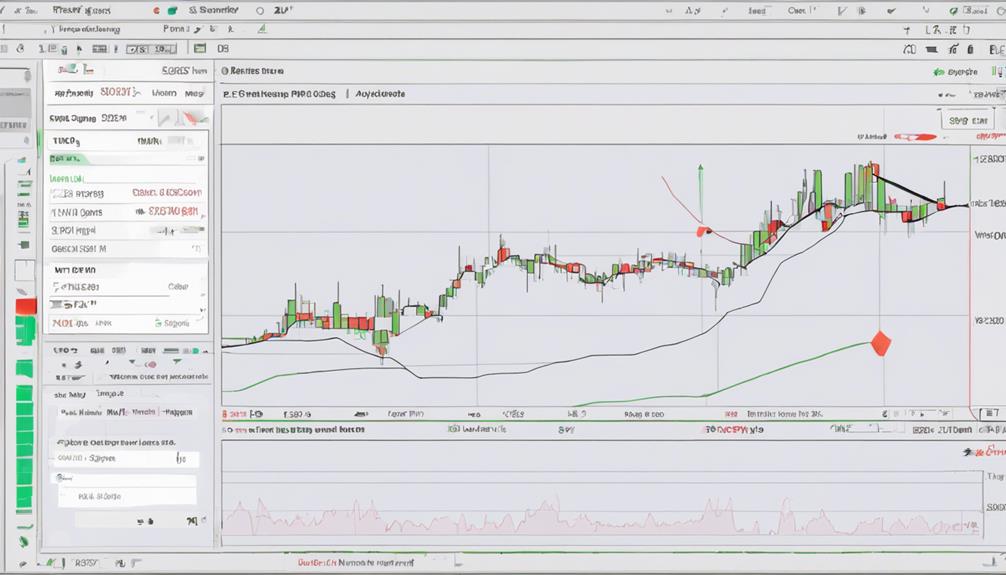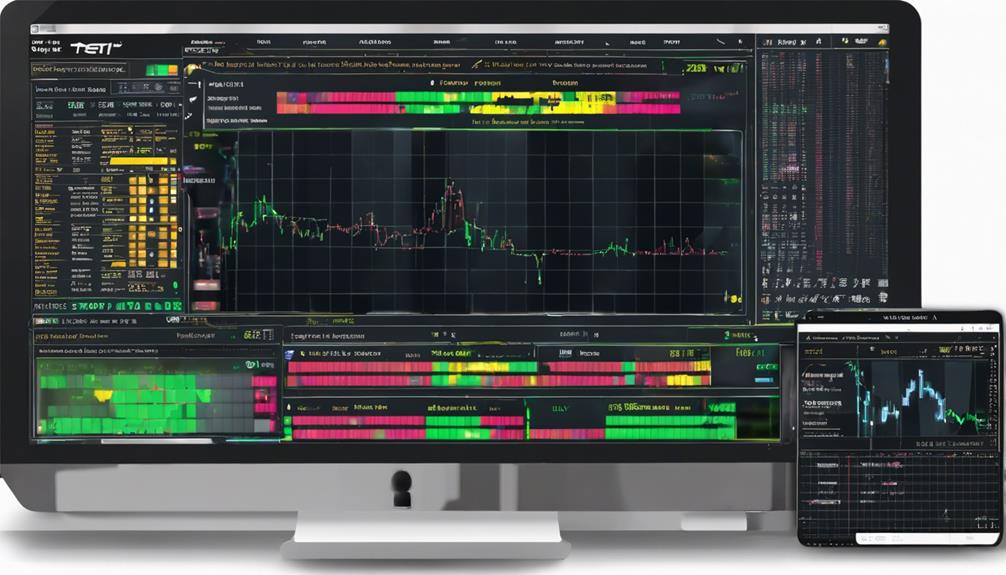When embarking on the journey of setting up a Trix indicator, traders often find themselves navigating through a series of steps that require attention to detail and a thorough understanding of the indicator's functionality.
From the initial installation process to fine-tuning the parameters to tailor it to individual trading styles, the path to full utilization of the Trix indicator holds complexities that can only be unraveled through meticulous exploration.
As traders delve into the intricacies of Trix setup, they uncover a realm where technical analysis meets strategic decision-making, paving the way for enhanced trading acumen.
Trix Indicator Overview
In understanding the Trix Indicator Overview, it is essential to grasp the fundamental purpose and function of this technical indicator, which is a triple exponential moving average (TRIX). TRIX is utilized to analyze momentum and trends in the market by filtering out insignificant price movements.
Traders rely on TRIX values to determine market direction, with positive values indicating an uptrend, negative values signaling a downtrend, and values near zero suggesting a neutral market stance. As a moving average oscillator, TRIX also helps identify overbought and oversold market conditions based on extreme positive or negative values.
Additionally, traders pay close attention to TRIX signal line crossovers, which can provide valuable insights into potential shifts in market momentum. By incorporating TRIX alongside other technical indicators, traders aim to enhance the accuracy of their trading signals and make well-informed decisions in the dynamic financial markets.
Setting Up Trix Indicator Parameters

Building upon the foundational understanding of the Trix Indicator Overview, configuring the TRIX indicator parameters plays a crucial role in tailoring this technical tool to align with specific trading requirements and timeframes. When setting up the TRIX indicator parameters, traders can consider the following:
- Calculation Period: The default calculation period for TRIX is often set to 14 days, but traders have the flexibility to adjust this based on their trading preferences and strategies.
- Smoothing Factor: Selecting the appropriate smoothing factor for the Exponential Moving Averages used in TRIX is crucial for customizing the indicator's sensitivity to price changes.
- Enhancing Sensitivity: Traders can fine-tune the TRIX indicator settings to increase sensitivity to price movements, which can result in more timely signals for trading decisions.
- Trading Strategies: Understanding and adjusting the TRIX indicator parameters are essential steps for effectively incorporating this momentum indicator into various trading strategies.
Choosing the Timeframe for Trix

When selecting the timeframe for the Trix indicator, traders must consider their trading style and objectives to align with the appropriate period that suits their strategy. The timeframe chosen plays a crucial role in the effectiveness of the TRIX indicator.
For those engaged in intraday trading, shorter timeframes such as 5 or 10 periods are commonly used to capture quick price movements. On the other hand, traders focusing on swing trading often opt for longer timeframes like 14 or 20 periods to identify and capitalize on medium-term trends. Longer timeframes provide smoother TRIX values, making them suitable for capturing longer-term trends accurately.
It is essential for traders to experiment with different timeframes to determine the optimal setting that aligns with their trading goals and preferences. The chosen timeframe significantly impacts the sensitivity and responsiveness of the TRIX indicator to price movements, influencing the quality of signals generated for informed decision-making.
Interpreting Trix Indicator Signals

Interpreting signals from the TRIX indicator involves analyzing its values to gauge market trends and momentum accurately. Here are key points to consider when interpreting TRIX indicator signals:
- Positive Values: TRIX signals with positive values typically indicate an uptrend in the market, suggesting bullish momentum.
- Negative Values: Conversely, negative TRIX values often suggest a downtrend, indicating bearish momentum in the market.
- Zero Line Cross: The Zero Line Cross strategy involves monitoring TRIX as it crosses above or below the zero line. Crosses above zero may indicate a bullish trend, while crosses below zero could signal a bearish trend.
- Signal Line Cross: TRIX signal line crossovers can also provide valuable insights. When TRIX crosses above its signal line, it may indicate a buy signal, while a crossover below the signal line could be seen as a sell signal.
Understanding these signals can help traders identify market trends, measure momentum, and pinpoint potential entry points for trading strategies effectively.
Implementing Trix Indicator in Trading Strategy

Utilizing the TRIX indicator in a trading strategy enhances market analysis and aids in identifying optimal entry and exit points based on momentum signals. Traders incorporate the TRIX indicator into their trading strategies to assess market momentum accurately.
By setting up the TRIX indicator with customized period lengths, traders align the tool with their trading preferences and risk tolerance levels. TRIX zero line crossovers play a crucial role in signaling shifts in market momentum; crossings above zero suggest potential buying opportunities, while crossings below zero indicate potential selling opportunities.
Additionally, identifying bullish and bearish divergences in the TRIX indicator can provide insights into possible reversals in market trends, empowering traders to make well-informed decisions. Integrating TRIX signals into trading strategies enhances the accuracy of trade signals and contributes to improved overall trading performance.
Can the Trix Indicator be Set up Easily by Following These Steps?
To calculate TRIX indicator steps, first, determine the period for exponential moving averages. Subtract the previous EMA value from the current one. Then, calculate the moving average of the TRIX. Finally, plot the TRIX line on the chart.
Frequently Asked Questions
What Is the Best Setting for the TRIX Indicator?
The best setting for the TRIX indicator depends on trader preferences and timeframes. While a 14-period calculation is common, adjusting the period can provide more sensitive or smoother signals. Finding the right balance is crucial.
What Is the Trix Strategy in Tradingview?
The TRIX strategy in TradingView leverages the TRIX indicator to discern market trends and momentum, aiding traders in spotting potential entry and exit points. By interpreting TRIX values, traders enhance technical analysis skills and trading performance.
Is Trix a Good Indicator?
TRIX is a valuable indicator for traders, aiding in assessing price momentum and identifying overbought/oversold conditions. Its ability to filter out noise, detect divergences, and enhance decision-making through crossovers makes it a useful tool in trading strategies.
What Is the TRIX Indicator in Python?
The TRIX indicator in Python is a powerful tool for analyzing market trends and assessing price momentum. Developed by Sofien Kaabar, CFA, it provides traders with valuable insights into overbought and oversold conditions.
Conclusion
In conclusion, the process of setting up a Trix indicator involves configuring parameters, selecting appropriate timeframes, and interpreting signals for trading strategies.
By mastering the utilization of Trix in technical analysis, traders can enhance their decision-making abilities in the financial markets.
Embracing the complexities of this indicator with a critical eye and strategic mindset is paramount for success in navigating the intricacies of trading.
